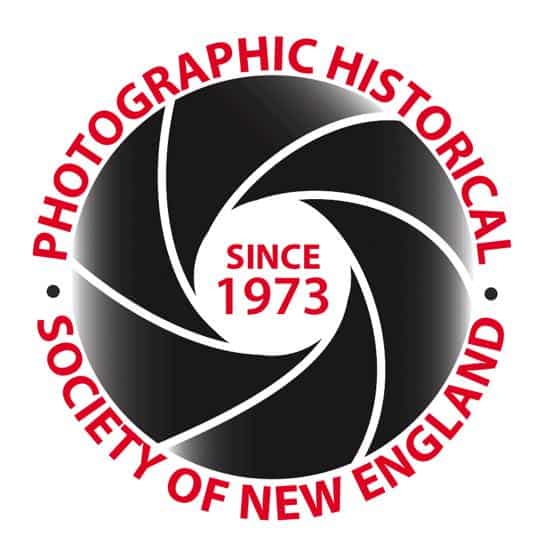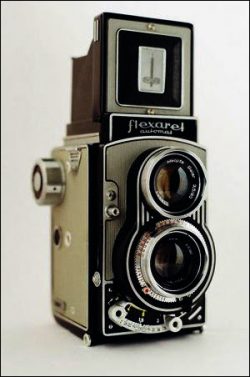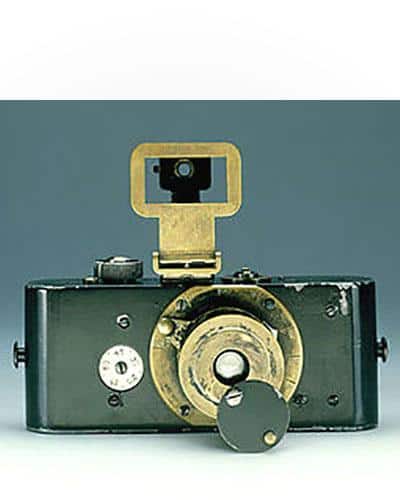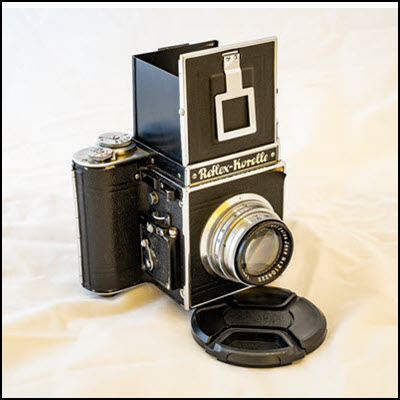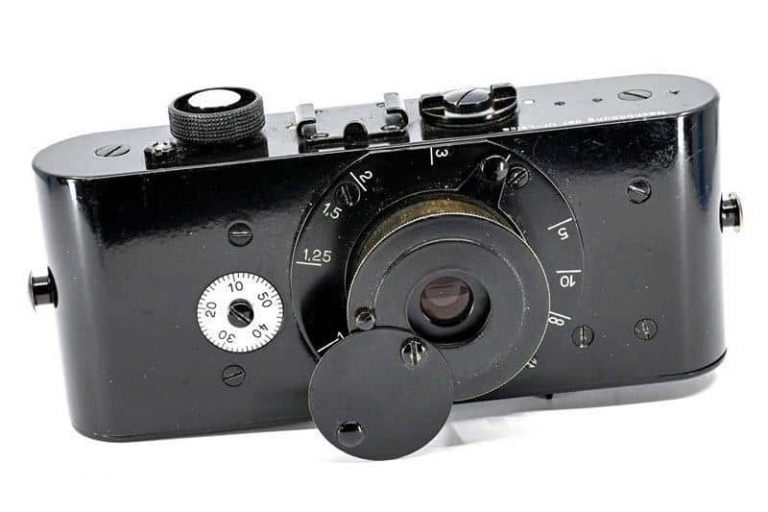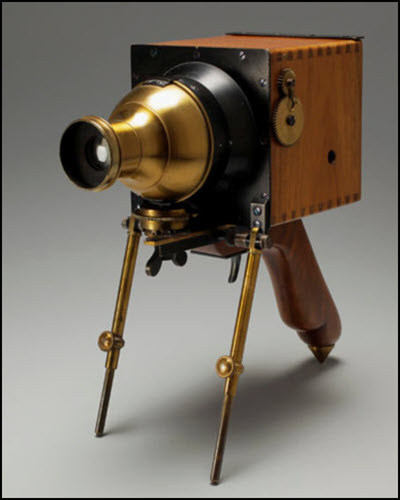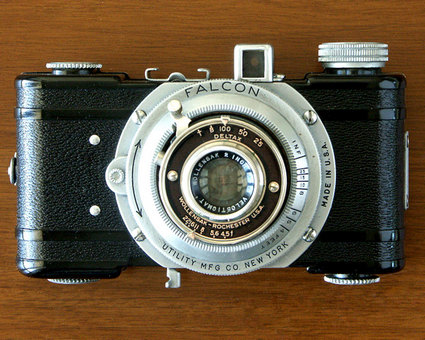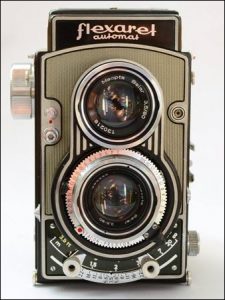
Closely tied to the German photographic industry, Czech cameras were popular from 1885 to WW I, and production continued until competition from Japan and Germany in the 1960’s delivered a crushing blow.
Earlier Flexette models gave way to the Flexaret line after WW II, produced by Meopta until 1970. All models are twin lens cameras with an aluminum body using 120 roll film to take square 6cm x 6cm photograph. One model that enjoyed considerable success is the Flexaret TLR; the Flexaret VII was the last of the line. They were designed for ease of use, intended for the amateur market, with a hint of Art Deco styling. “It was a fully mechanical camera with an all-metal body. It has a solid feel to it and has some advanced features mirroring Rolleicord and Rolleiflex models from the same period.” (https://camerapedia.fandom.com/wiki/Flexaret_VII)
One feature is the user can set the light value on a mechanical ring. This links a combination of shutter speeds and aperture settings to a specific exposure setting. If you need to stop down the lens a little more, there’s no need to set the shutter speed, the system keeps the exposure value the same. This feature (the Light Value System or LVS) was popular on leaf-shutter cameras in the mid-1950s to the late 1960s. Hasselblad lenses, Rolleicord and Rolleiflex cameras, and many 35mm cameras such as the Kodak Retinas and Zeiss Contaflex used the LVS.
The Flexaret VII has a Pentacon Prestor shutter with speeds up to 1/500 with a Belar 80/3.5 lens produced by Meopta, the camera’s manufacturer. As with any TLR, a lens hood helps produce better results. Unfortunately, a B36 bayonet mount for filters limits the filters that can be used with the Flexaret VII; this is also true for the Flexaret VI and Standard models.

Several options make the VII more versatile. These include a 35mm film cartridge insert (and masks for the film plane and viewscreen) instead of 120 roll film. There is also a 6cm x 4.5cm roll film insert option. There are two sets of close-up lenses; one for 1m to 0.5m and one for 0.5 to 0.33m. The lenses always come in pairs (one thick for the viewing lens and one thin for the taking lens). The one for the viewing lens uses a prism for parallax correction.
Visit https://en.wikipedia.org/wiki/Flexaret for additional information about the history of Flexaret. This source reports the Czech photographer Jan Saudek called Flexaret “our [Czech] national pride. There is little information in general about the Czech photographic industry. The February 1999 issue of Classic Camera had a brief overview, but unfortunately the magazine is not available online.
Images courtesy https://www.flexarety.cz/flexaret-vii/ Michael Blaha
What the heck…
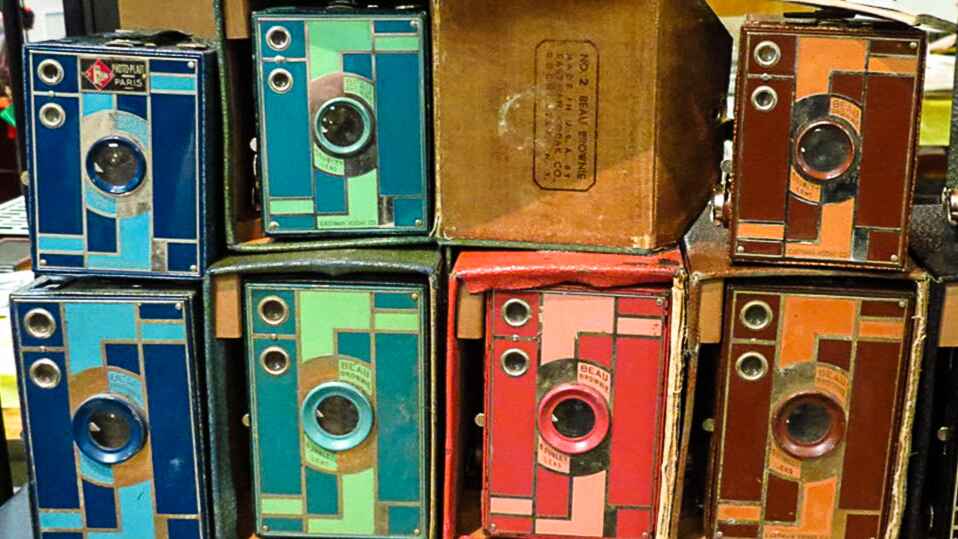
Are Those Even Cameras?!
Join the PHSNE Newsletter and learn more about photographic history and preservation. Already an expert? Come and share your collections and knowledge as we celebrate the history and advancement of photography.
